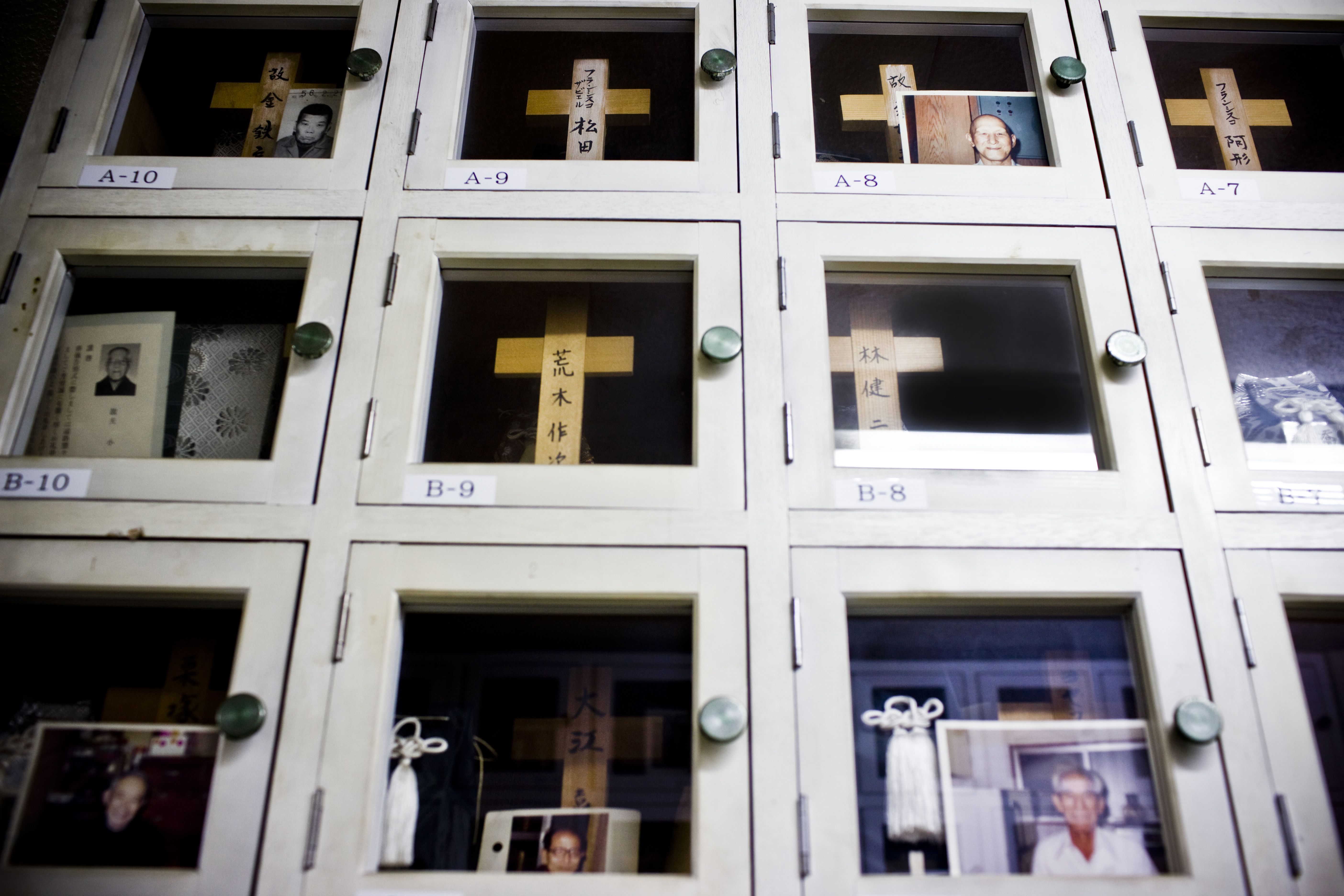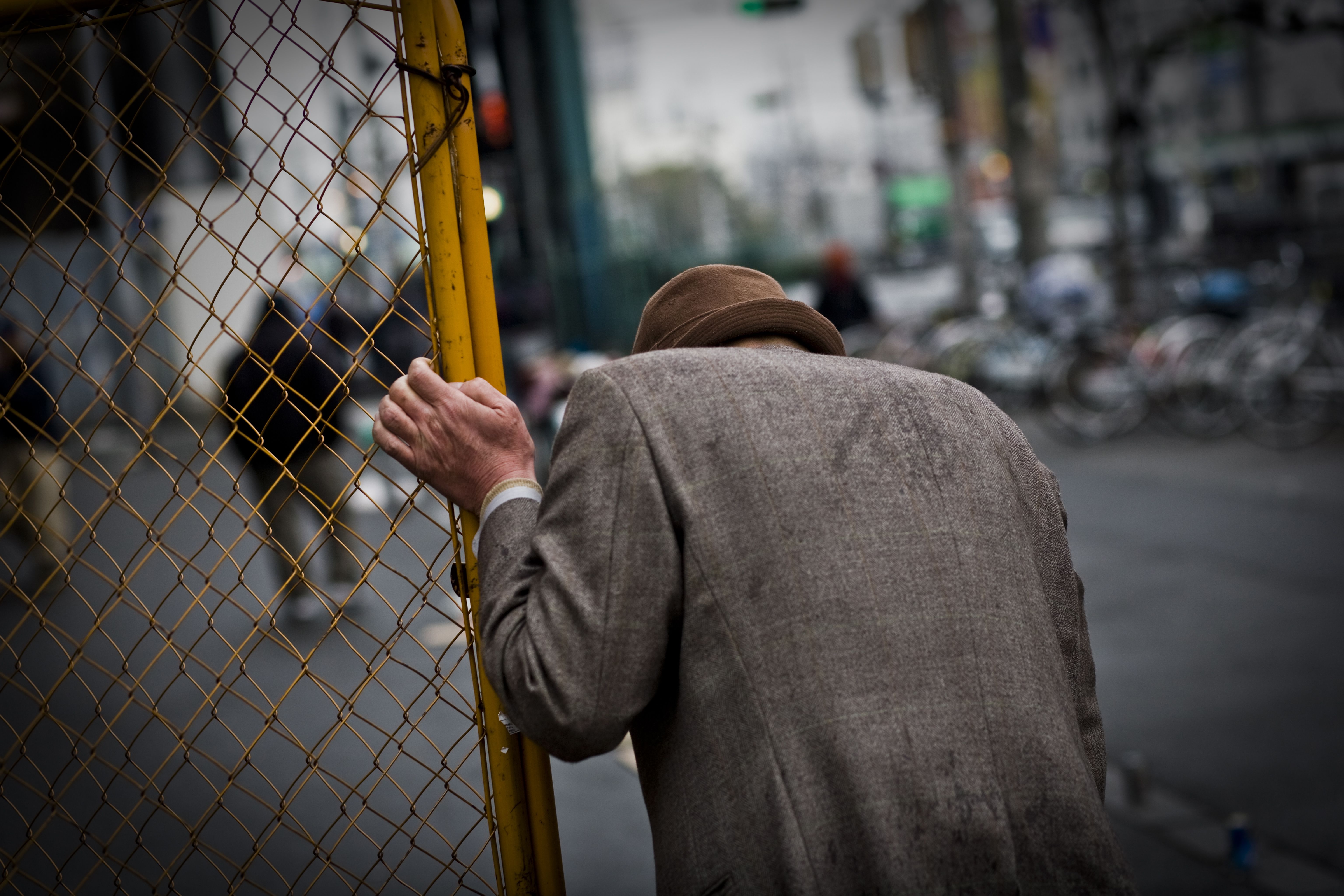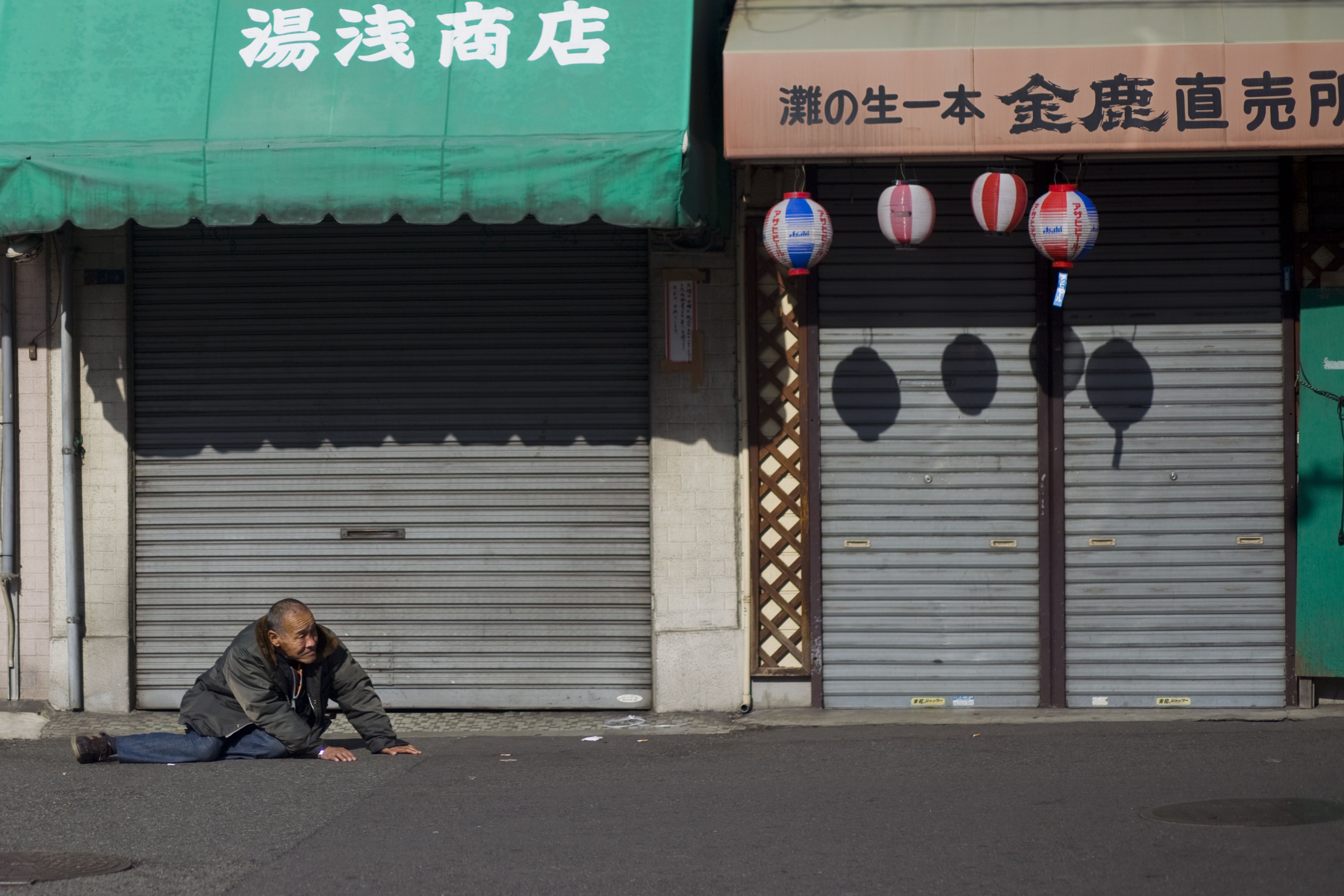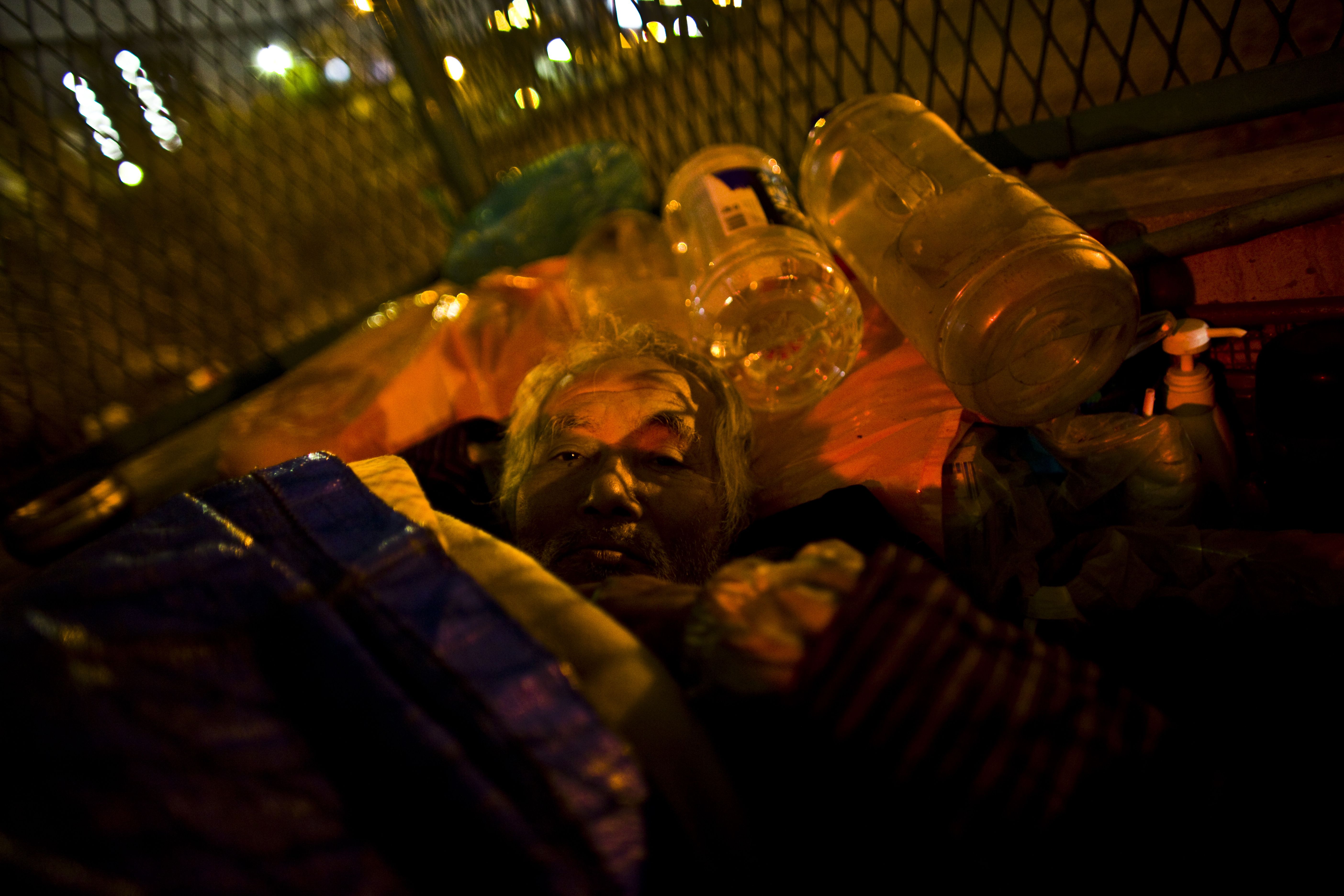In Kamagasaki, unemployment and poverty are not the only problems. Alcoholism, street death, suicide, TB and most of all loneliness prevail.
According to a government survey, the average life expectancy of men in Kamagasaki is 73.1 years, the shortest in Japan, where the national average is 78.53 years. Men in Kamagasaki die rarely from old age but mostly from various illnesses triggered by a rough lifestyle of drinking and sleeping on the streets. Tetsu, 65, a retired truck driver, says, “Every year, many people die outside of the labor center. When it is cold, I see people frozen to death all the time. They drink cheap sake, lie down and die.”
In order to prevent street death, various NGOs and religious groups conduct night patrols. I went along with one of the groups “Nojyukusha Network.” (Nojyukusha means “people sleeping outside.”) In one night, I saw nearly a hundred men curled up in cardboard boxes under the bridge, outside of the labor center, parks, and shopping arcades. Some men were still working, picking up cans and collecting cardboard boxes. We handed out rice balls and made sure they were just sleeping.
Nori, 60, who survives by collecting cans, witnessed a lonely death near a convenience store about a month ago.
“Many people were passing by him but nobody said anything. I thought he looked strange and I talked to him but he didn’t respond. When I touched him, he was already stiff. I guess he either froze or drank himself to death. I called the police who asked me a few questions and that’s it—the end of someone’s life,” said Nori.
The majority of men in Kamagasaki don’t have family ties. They live and die alone as social outcasts from the mainstream “salary man” culture. When they die, their bodies are not often claimed by family members. The number of unclaimed bodies has increased steadily over years, reaching a record high of 1524 in 2010 in Osaka.
Suicides are also common. "Old people jump from a building because they cannot work," said Tetsu. "No work, nowhere to go, and nobody to turn to. So they kill themselves. I understand how they feel."















